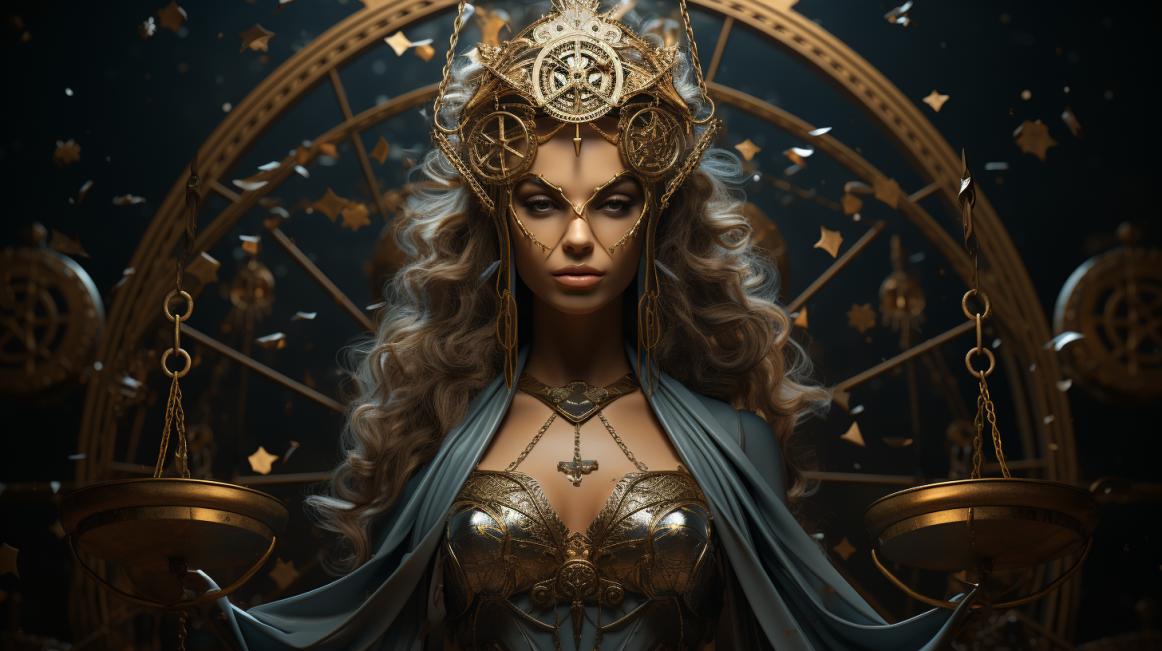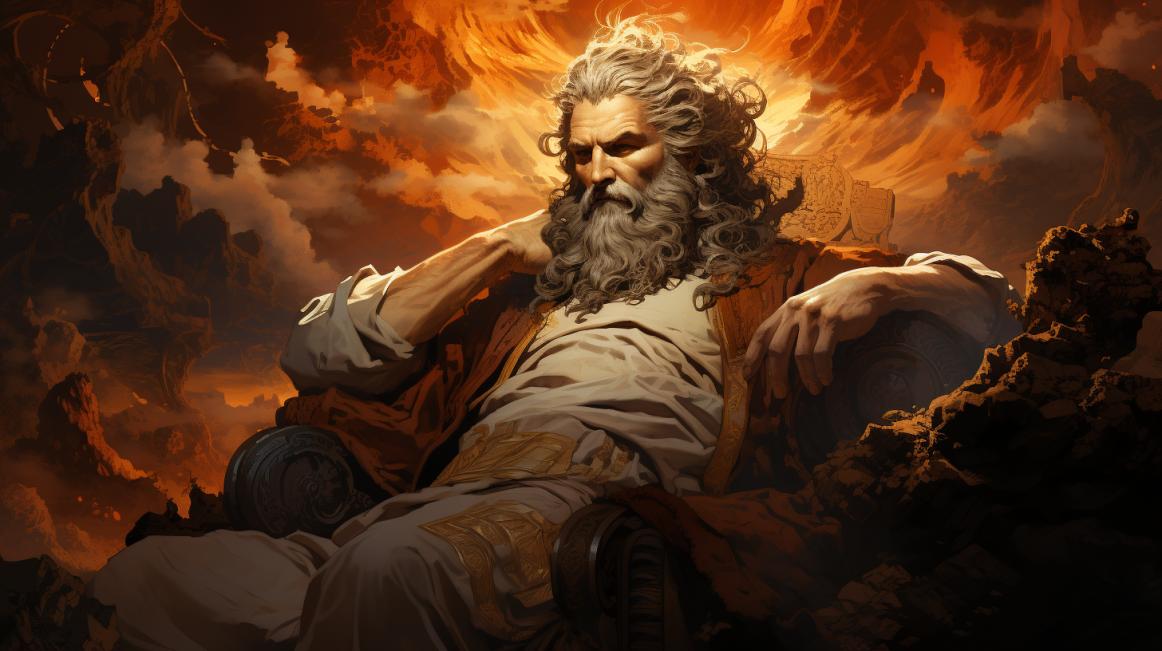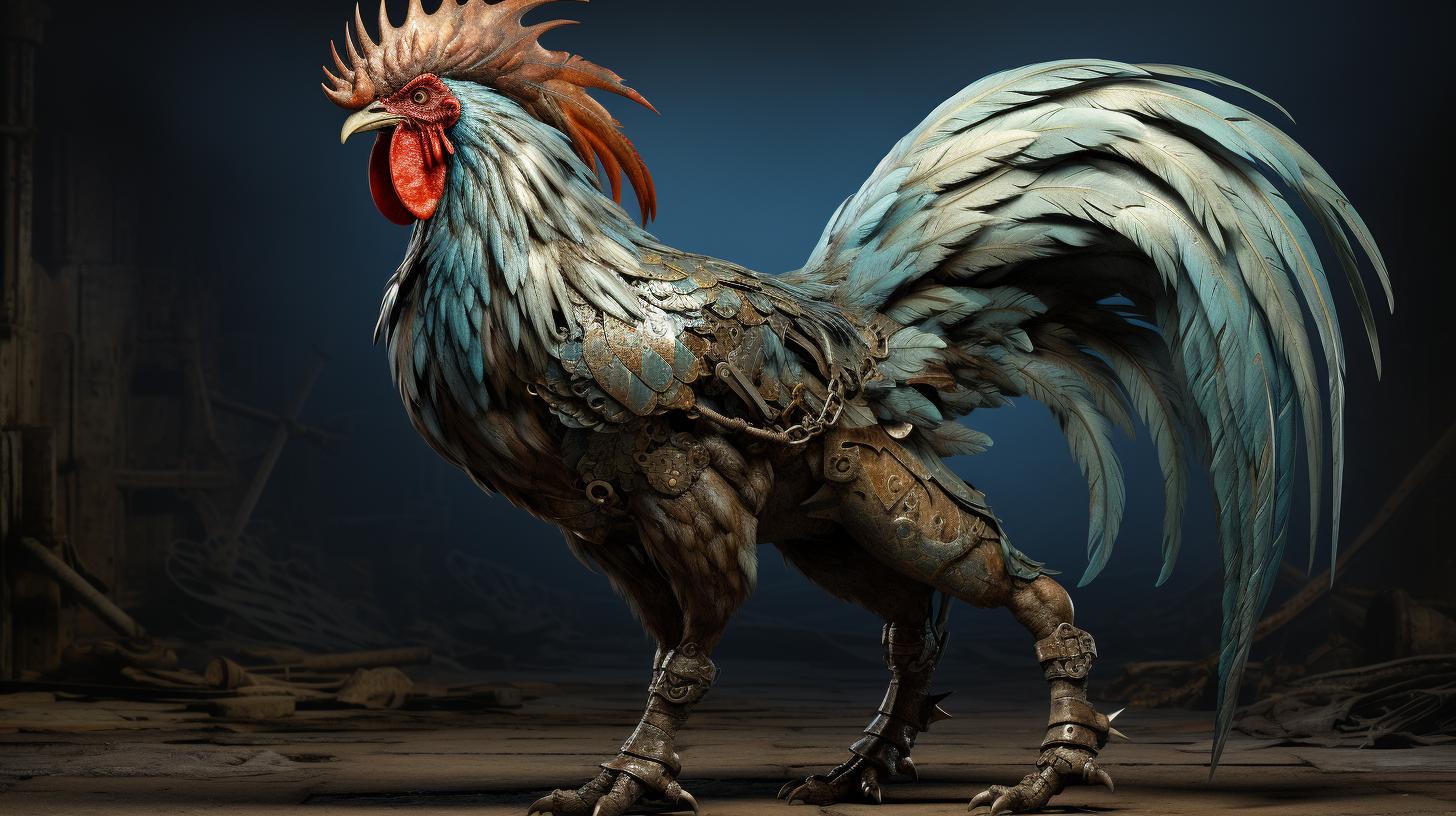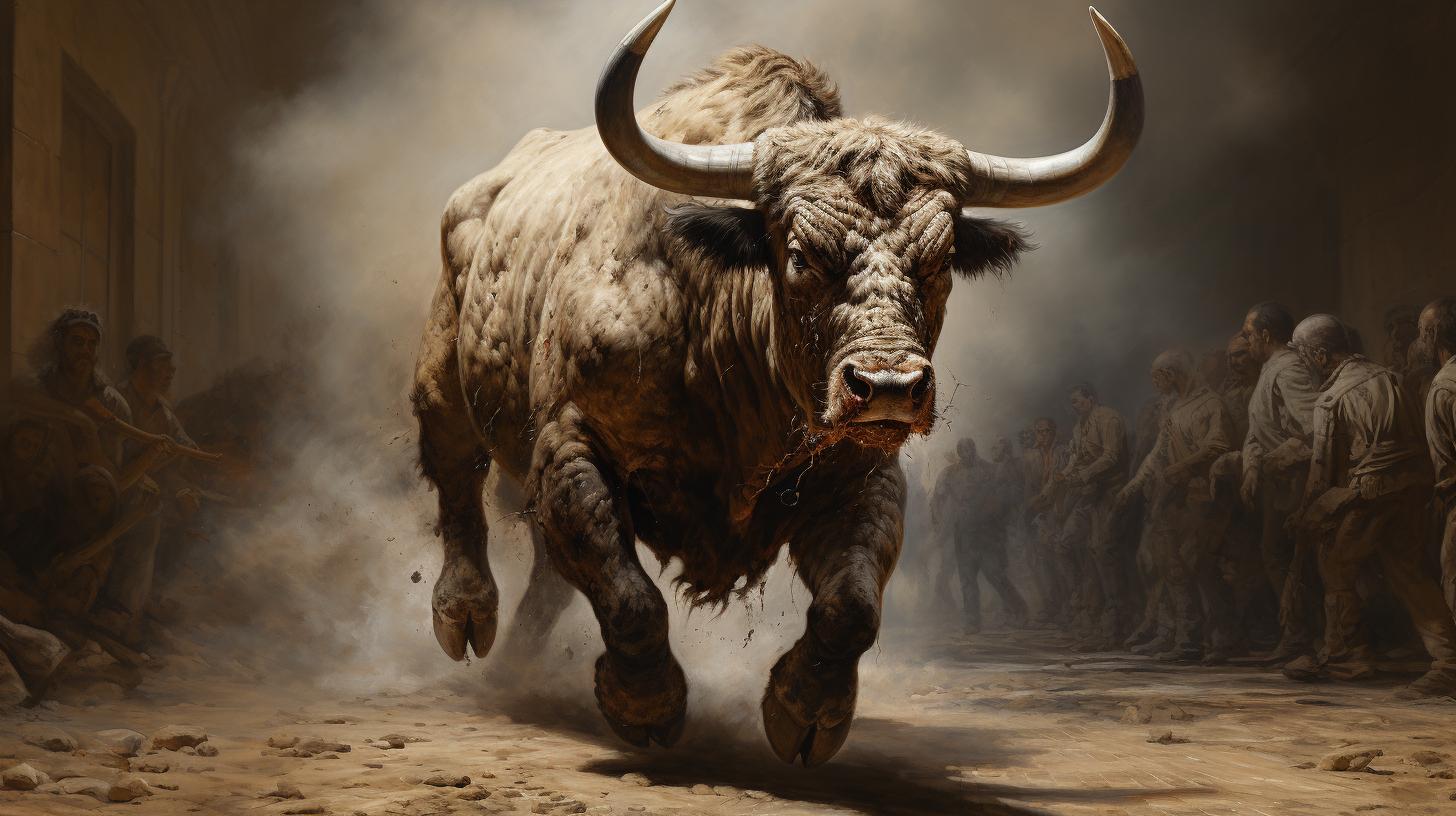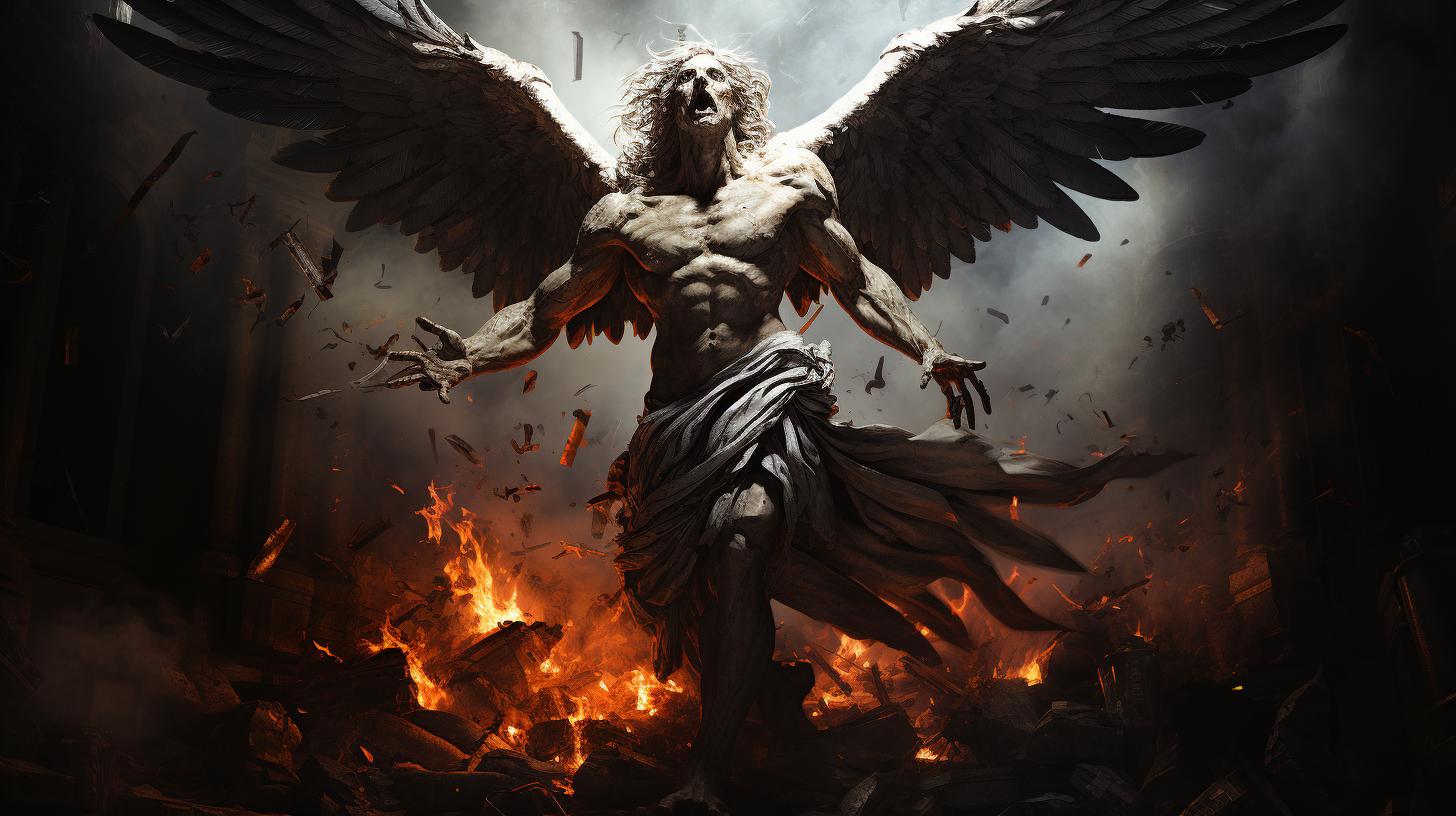Astraea: The Celestial Goddess of Innocence and Purity
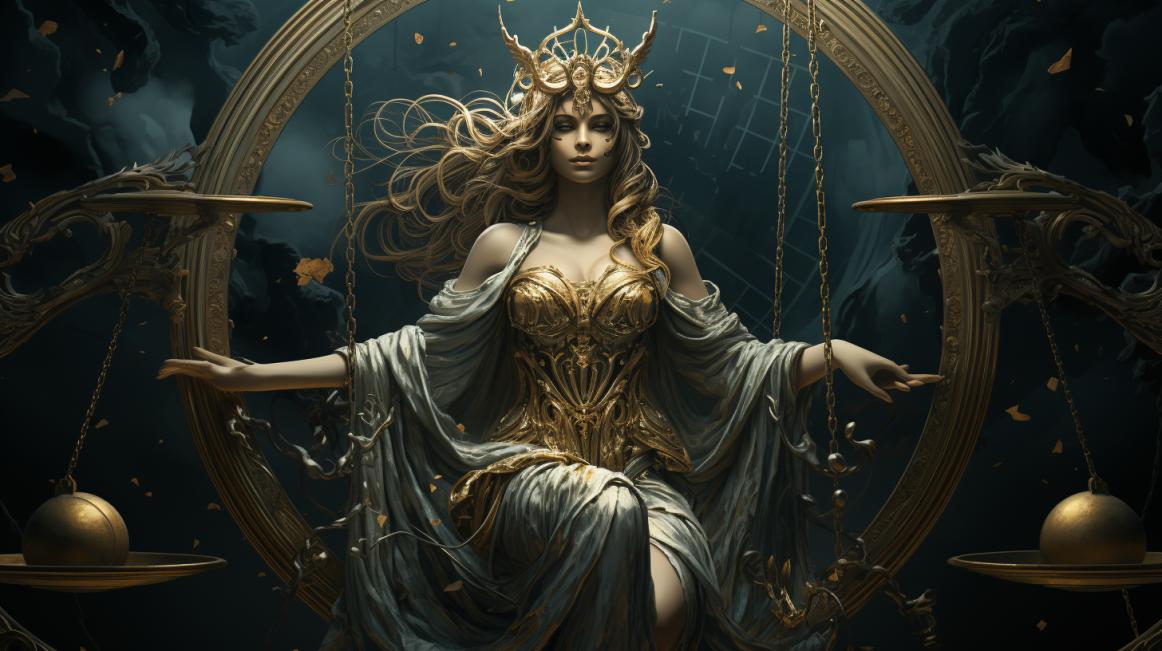
Astraea, the Greek goddess of justice, holds a significant place in ancient mythology and continues to inspire various aspects of culture. Explored through her origins and depictions in art, Astraea represents the virtues of justice, purity, and innocence.
Known as the goddess of innocence and the goddess of purity, her divine essence is intertwined with the moral fabric of society.
As the last immortal to reside among humans during the Golden Age, her departure symbolizes the decline of humanity. However, the legacy of Astraea endures, as she is believed to bring hope and restore harmony in a new era.
Her celestial transformation into the constellation Virgo serves as a constant reminder of her connection to justice. This article delves into Astraea’s mythology, symbolism, and cultural impact, highlighting her role as the virgo goddess Astraea.
Astraea in Greek Mythology
Astraea, the Greek goddess of justice, is a prominent figure in Greek mythology.
Her origins and parentage, depictions in art, association with the edges of the Golden Age, and transformation into the constellation Virgo contribute to her intriguing story. Astraea’s mythology is rich with tales of her virtues and the astraea goddess symbol, often depicted as a celestial figure who personifies the ideals of an unblemished era.
Origins and Parentage of Astraea
According to the most accepted myth, Astraea is the daughter of the second-generation Titan Astraeus, the god of dusk, and the goddess of dawn, Eos. Some accounts also attribute her lineage to Zeus and Themis. This divine heritage underscores her connection to celestial realms and reflects her role as the “Goddess of the Stars” or “Maiden of the Stars.”
Her status as astrea greek goddess and goddess astrea in astrea greek mythology highlights her significance within the pantheon.
Depictions of Astraea in Art
Artistic representations often portray Astraea as a beautiful winged maiden, draped in a partially transparent gown or mantle. Sometimes, she is depicted holding a flaming torch and Zeus’s lightning bolts, symbolizing her link to justice.
These depictions capture her ethereal and radiant qualities, emphasizing her stance as a goddess of divine order. Her portrayal as the greek goddess astraea and her connection to the astraea goddess symbol reinforce her ethereal presence and divine authority.
Astraea and the Edges of the Golden Age
Astraea’s significance lies in her association with the Golden Age, a mythical period of utopia and human flourishing. As the last immortal to live among humans during this era, she symbolizes both their ideal state and their subsequent fall from grace.
Her departure from Earth marks the transition from the Golden Age to the less ideal ages that followed. Astraea’s mythology tells of her hope for humanity’s return to justice and innocence, embodying her powers as astraea goddess powers and her role as the greek god of purity.
Astraea’s Transformation into the Constellation Virgo
Upon leaving Earth, Astraea is said to have ascended to the heavens and transformed into the constellation Virgo. This transformation, attributed to Zeus, represents the divine acknowledgement of humanity’s failure.
The proximity of the Virgo constellation to Libra, symbolizing justice and balance, further emphasizes Astraea’s connection to the concept of justice. The astraea constellation serves as a celestial embodiment of her virtues and her eternal presence in the night sky.
The Symbolism of Astraea
Astraea, the Greek goddess of justice, embodies profound symbolism that reflects her essential role in maintaining order and fairness within the realm of humanity. Through her various representations and connections, Astraea conveys powerful concepts that resonate with individuals across time and cultures.
As the personification of justice itself, she exemplifies the importance of fairness, impartiality, and the preservation of moral principles. In many depictions, Astraea is shown holding a balance, symbolizing her commitment to weighing evidence and ensuring equitable judgment.
Her identity as what is astraea the goddess of, further solidifies her as a central figure in Greek mythology and the embodiment of justice and purity.
Astraea’s Connection with Dike
Astraea shares a close relationship with Dike, the Greek goddess who represents justice in a social and legal context.
Together, they stand as symbols of the harmonious interplay between divine and human justice systems.
Astraea’s presence serves to remind individuals of the crucial need for ethical conduct and the pursuit of justice in all aspects of life. Her connection to Dike underscores her importance in the pantheon as a protector of innocence and a promoter of purity.
Astraea’s Role as a Bringer of Hope
Astraea carries an enduring message of hope, inspiring individuals to believe in the possibility of a better world. Her departure from Earth during the decline of humanity signifies a temporary absence rather than permanent abandonment.
This serves as a beacon of hope, suggesting that Astraea will one day return, ushering in a new age of abundance, peace, and justice. The lore surrounding who is astraea and her envisioned return encapsulates the timeless hope in humanity’s potential for redemption and the restoration of purity and innocence.
Astraea’s Association with Purity and Innocence
In addition to her role as the goddess of justice, Astraea, often referred to as Astra or Aestraea in various interpretations, is linked to purity and innocence. Her radiance and ethereal presence symbolize a sense of untainted goodness.
At times, she is portrayed as a beautiful winged maiden, draped in a translucent garment, alluding to her association with incorruptibility and moral rectitude. This depiction aligns with her identity in Astraea Greek mythology as the divine figure embodying the highest moral standards.
The Legacy of Astraea
The legacy of Astraea, the Greek goddess of justice, extends far beyond the realm of mythology. Her influence can be seen in various aspects of art, literature, human rights movements, and modern culture, as well as her ongoing presence in the constellation of Virgo.
Her story is deeply rooted in the narrative of the celestial gods, with tales of her possible husband and her reign as a deity of justice and purity.
Astraea’s Influence on Art and Literature
Astraea’s image and symbolism have inspired countless artists and writers throughout history.
Her representation as a beautiful winged maiden, holding a torch and the rays of Zeus, has been depicted in paintings, sculptures, and literary works. Often identified among the Astreae, a group symbolizing divine justice, her figure perpetuates the pursuit of ethical integrity and moral standards.
Astraea’s Impact on Human Rights Movements
Astraea’s strong sense of justice has made her a symbol of equality and fairness in the fight for human rights. Her commitment to upholding the laws and principles of moral conduct has influenced activists and organizations dedicated to promoting justice and combating injustice, reflecting her enduring role as a beacon of hope and ethical guidance.
Her legacy serves as a reminder to strive for a just society where everyone is treated equitably.
Astraea’s Significance in Modern Culture
Astraea continues to be a prominent figure in modern culture, representing hope and the possibility of a better world. Her name has inspired the establishment of organizations and foundations that work towards promoting justice, such as the Astraea Lesbian Foundation for Justice.
Her story and symbolism resonate with individuals seeking to create positive change and uphold ethical values in society.
Astraea’s Ongoing Presence in the Constellation of Virgo
Astraea’s departure from Earth to the heavens is immortalized in the constellation of Virgo. As the constellation representing purity, innocence, and justice, Virgo serves as a reminder of Astraea’s enduring legacy.
The celestial connection between Astraea and the concept of justice is mirrored in the proximity of the constellations Virgo and Libra, symbolizing the scales of justice.
Unveiling the Myth: Interpretations and Misconceptions
As we delve deeper into the mythology surrounding Astraea, the Greek goddess of justice, it is essential to explore the various interpretations and misconceptions that have arisen over time.
This section aims to shed light on the understanding of Astraea’s departure from Earth, her potential return, the debunking of common confusions with Asteria, and her role in the old Greek religion and beyond.
Understanding Astraea’s Departure from Earth
Astraea’s departure from Earth holds significant mythical significance. In Greek mythology, it is believed that as humanity gradually descended into a state of wickedness during the Bronze or Iron Age, Astraea found herself unable to tolerate the moral decay any longer.
Thus, she left the Earth, seeking refuge in the heavens. This departure symbolized the failure of humanity’s inherent goodness and the loss of the Golden Age’s utopia.
Astraea’s Potential Return and the New Golden Age
Despite her departure, hope remains.
The myth surrounding Astraea suggests that one day, she will return to Earth, ushering in a new Golden Age of justice and prosperity. This concept reflects humanity’s enduring belief in the potential for redemption and the restoration of harmony within society.
Astraea’s return offers a glimmer of hope for a future filled with righteousness and balance.
Debunking Common Confusions: Asteria and Astraea
- Contrary to some misconceptions, Astraea and Asteria are separate entities in Greek mythology.
- Asteria, often associated with falling stars and dreams, is the goddess of nocturnal oracles.
- Astraea, on the other hand, embodies justice, innocence, and purity.
- It’s important to distinguish between these two goddesses to comprehend their individual roles and symbolism.
Astraea’s Role in the Old Greek Religion and Beyond
Astraea’s significance extends beyond Greek mythology.
She played a pivotal role in the ancient Greek religion, representing the highest ideals of justice and morality. Furthermore, Astraea’s image as a just and fair deity has transcended time, captivating the imaginations of artists, writers, and thinkers throughout history.
Her legacy continues to inspire discussions on society, law, and ethics even in modern times.
The Eternal Endurance of the Astraea Myth
The myth of Astraea, the Greek goddess of justice, continues to hold a lasting presence in various aspects of our culture and beliefs. From its symbolic representation in the Tarot to its frequent references in contemporary literature, Astraea’s story captivates and inspires.
Let’s explore some of the ways in which Astraea’s myth endures.
Astraea’s Symbolic Representation in the Tarot
In Tarot decks, Astraea is often associated with cards that represent justice, balance, and fairness. Depicted as a winged figure holding a sword and scales, she serves as a reminder of the ethical principles and moral judgments we encounter in life.
The inclusion of Astraea in the Tarot lineage highlights her timeless significance in our quest for truth and righteousness.
Cultural References to Astraea in Contemporary Literature
Authors and poets across the ages have found inspiration in Astraea’s myth and have woven her into their narratives. From classical literature to modern works, Astraea’s presence can be seen as a symbol of hope, fairness, and the restoration of harmony.
Her story resonates with themes of justice and the pursuit of a better world, making her a powerful figure in literature.
Exploring Astraea’s Connections to Greek Deities
Astraea’s story is intricately linked with various Greek deities and myths. Her connection with Dike, the goddess of justice, represents the fundamental values of moral order and the upholding of law.
Additionally, Astraea’s lineage, whether as the daughter of Astraeus and Eos or Zeus and Themis, signifies her divine heritage and ties to the broader pantheon of Greek gods and goddesses.
Tracing Astraea’s Global Influence: Views and Interpretations
The influence of Astraea’s myth extends far beyond Greece, reaching different cultures and societies around the world. Views and interpretations of Astraea may vary, but her core ideals of justice, purity, and harmony remain universally appealing.
Astraea’s story serves as a reminder of the potential for redemption and the eternal human longing for a just and equitable world.
.
.

